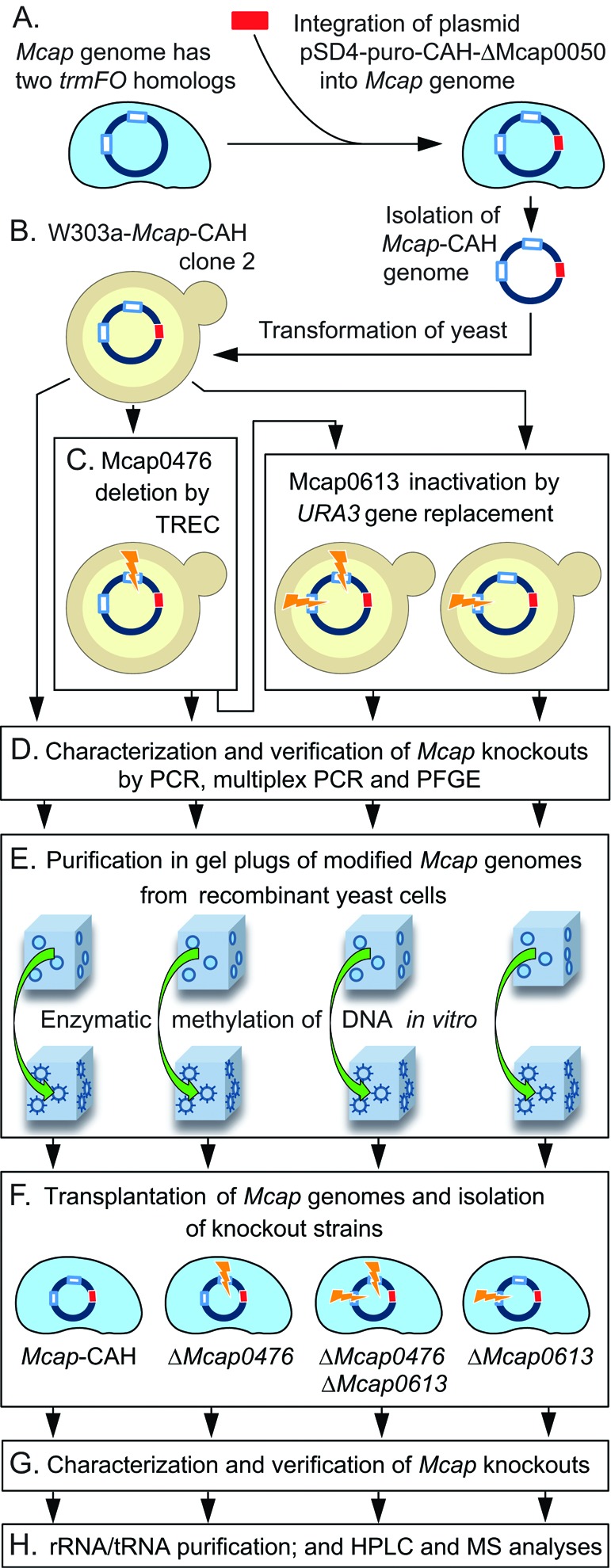Figure 1.

Synthetic biology strategy for manipulation of the Mcap genome. (A) The Mcap genome encodes two trmFO homologs, Mcap0476 and Mcap0613 (white rectangles). Strain Mcap-CAH was created by integration of the plasmid pSD4-puro-CAH-ΔMcap0050 (red rectangle) into the Mcap chromosome (21). Plasmid pSD4 contains the yeast centromere CEN6, an autonomously replicating sequence ARSH4, and the auxotrophic marker HIS, for propagation and selection of the Mcap-CAH genome in yeast, as well as a puromycin resistant marker for selection in mycoplasma. (B) Yeast cells were transformed with the intact Mcap-CAH genome. (C) Mcap0476 and/or Mcap0613 were excised by transforming yeast cells with PCR-generated cassettes containing fragments of the targeted genes. Mcap0476 was cleanly deleted by the TREC method (tandem repeat coupled with endonuclease cleavage, Figure 2A), an approach that can be reiterated to inactivate multiple genes in the same chromosome. Mcap0613 was removed by insertion of the URA3 gene (Figure 2B). (D) Gene knockouts were verified by PCR, and the integrity of the Mcap chromosomes was checked by multiplex PCR and PFGE (Supplementary Figures S2 and S3). (E) Recombinant Mcap chromosomes were extracted from yeast cells in agarose gel plugs, and the DNA was methylated in vitro to avoid restriction upon (F) transplantation back into Mcap cells to replace the wild-type genome. (G) The structures of the Mcap-recombinant genomes were verified (Supplementary Figure S4) before (H) analysis of the mycoplasma tRNA and rRNA modifications by HPLC and mass spectrometry (MS).
